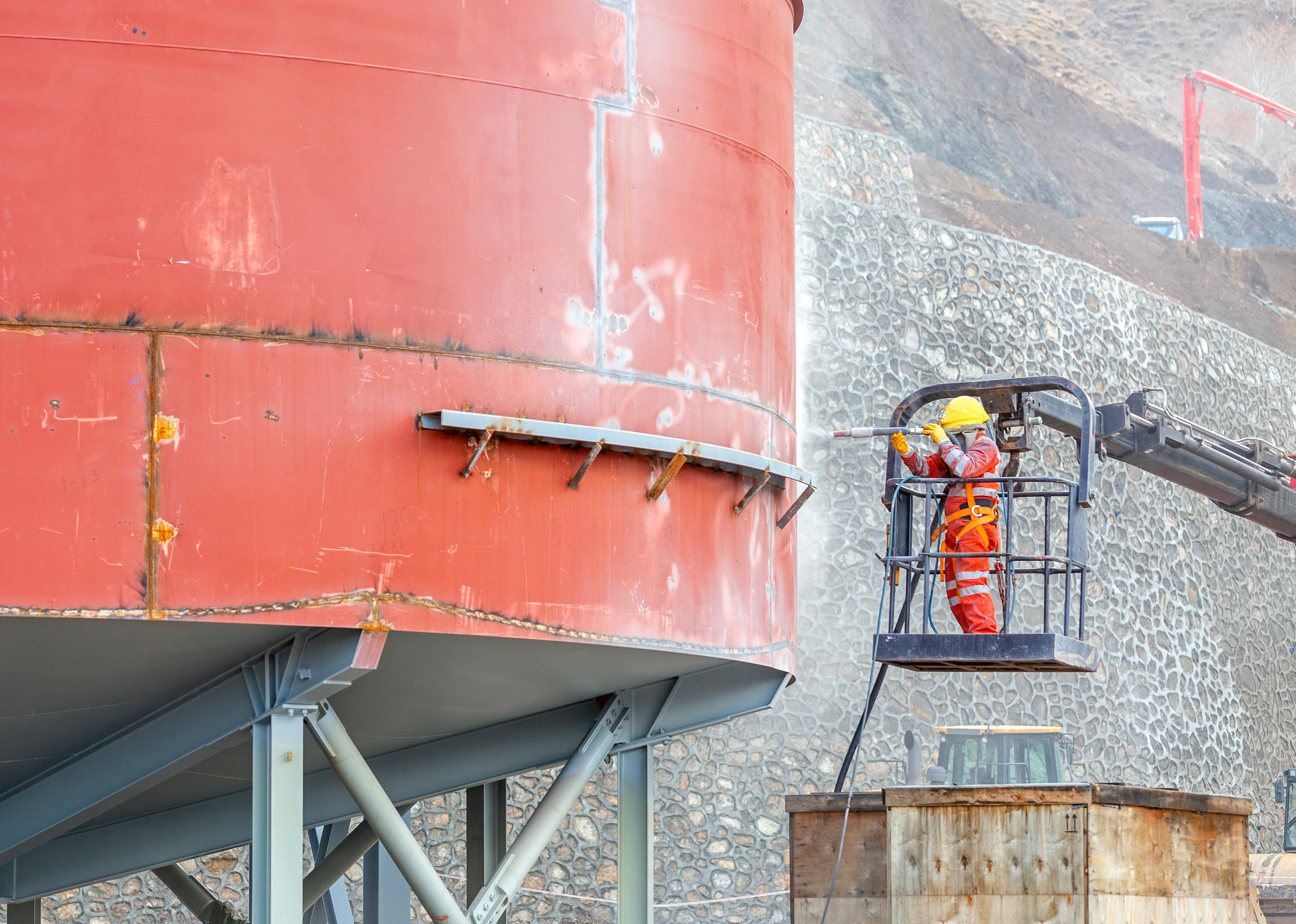Building for Durability and Efficiency
Storage tanks are indispensable across various industries, including agriculture, oil and gas, and water treatment. Understanding the key aspects of storage tank construction and how to choose the right storage tank construction company can help ensure these tanks are built to last and meet specific needs.
The Basics of Storage Tank Construction
1. Material Selection:
Choosing the right materials is a fundamental step in storage tank construction. Steel is often the preferred material due to its exceptional strength, durability, and ability to withstand high pressures. For water storage tanks, concrete is also a popular choice, especially in environments where chemical resistance or insulation is critical.
The selection process involves considering factors such as the type of material to be stored, environmental conditions like temperature and humidity, and budget constraints. These considerations ensure the tank’s longevity and safety in its intended application.
2. Site Preparation:
Proper site preparation is crucial for ensuring the stability and longevity of a storage tank. This process typically includes clearing the area of any debris, leveling the ground to create a stable base, and, in many cases, laying a concrete foundation to support the tank’s weight. For large-scale projects, it may also be necessary to conduct an environmental impact assessment to address any potential environmental concerns and comply with local regulations. This ensures the site is suitable and minimizes risks of settlement or structural issues.
3. Foundation Building:
Constructing a strong foundation is vital for the stability and safety of any storage tank, especially those designed to hold large volumes of liquid. The foundation must be engineered to bear the tank’s weight evenly and prevent any settlement or movement that could compromise its structural integrity. This often involves reinforced concrete slabs or ring walls, which are meticulously designed to distribute loads and withstand environmental stresses.
4. Tank Assembly:
The assembly process of a storage tank is tailored to the specific type of tank being constructed. For welded steel tanks, precise engineering and skilled labor are required to ensure that all seams are properly welded and leak-free. The internal lining and coatings, particularly for water storage tanks, play a crucial role in preventing corrosion and contamination, ensuring the tank remains safe and functional over time.
5. Protective Coatings:
Applying protective coatings is an essential step in the construction of storage tanks. These coatings serve as a barrier against corrosion, chemical reactions, and environmental degradation, significantly extending the tank’s lifespan. Companies like M&M Tank Coating Company specialize in advanced coating technologies, such as epoxy and polyurethane systems, which provide robust protection tailored to the specific needs of different industries and storage applications.
Water Storage Tank Construction: Ensuring Clean and Safe Water
Water storage tank construction demands meticulous planning to guarantee that the water remains clean, safe, and uncontaminated. The internal coatings and linings used in these tanks must be non-toxic and compliant with stringent health and safety standards, such as those set by the NSF/ANSI 61 certification. These coatings are typically epoxy-based, designed to resist corrosion and prevent leaching of harmful substances into the water.
Beyond the choice of materials, the storage tank’s design plays a critical role in maintaining water quality. Proper ventilation and access points are essential to prevent contamination during maintenance. The tank should also be engineered to minimize stagnant water areas where algae and other microorganisms can thrive. For instance, sloped floors can help ensure complete drainage, reducing the risk of bacterial growth.
Additionally, tanks designed for potable water storage often include features like UV-resistant coatings to prevent sunlight from penetrating the tank, thereby inhibiting algae growth. Regular inspections and maintenance further ensure that the tank remains in optimal condition, safeguarding the water supply.
By integrating these design elements and material choices, water storage tanks can reliably provide clean, safe water for various uses, from drinking water to industrial applications.
Why M&M Tank Coating Company is the Right Choice for Storage Tank Construction
M&M Tank Coating Company excels in storage tank construction, offering a blend of experience, advanced technology, and customized solutions. Their extensive expertise ensures tanks are built to withstand the toughest conditions, while their advanced coating solutions protect against corrosion and environmental wear, significantly extending the tank’s lifespan. M&M’s approach is tailored to meet each client’s specific needs, whether for water storage, chemicals, or other materials, and they adhere strictly to safety and regulatory standards.
Their comprehensive services cover every aspect of storage tank construction, from site preparation and foundation building to tank assembly and long-term maintenance. This holistic approach means that your project is handled with precision and care, reducing downtime and ensuring a reliable, high-quality storage solution. M&M’s proven track record across various industries, combined with their commitment to safety and compliance, makes them the ideal partner for any storage tank construction project.
 M&M Tank Coating Company
M&M Tank Coating Company 

